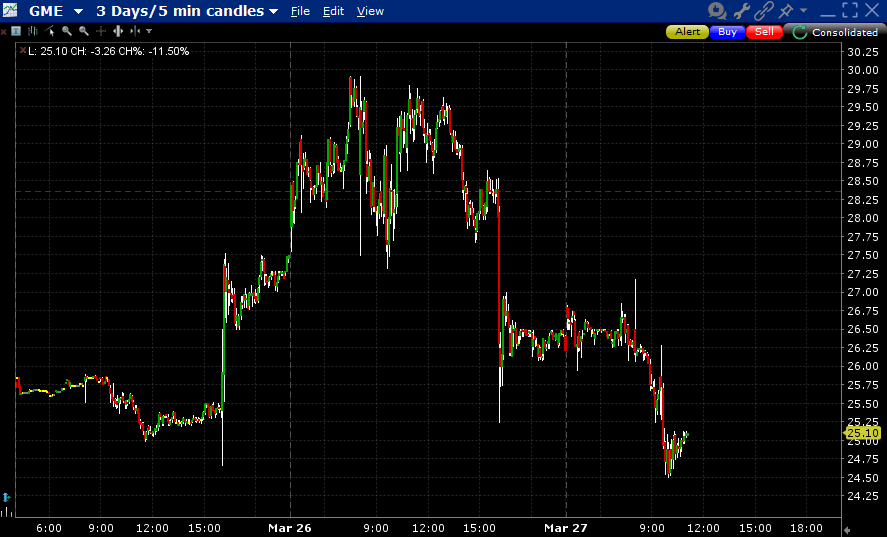Some Clarity On Tariffs, For Better Or Worse
Image Source: Unsplash
One of the market’s various concerns about tariffs has been the uncertainty. There has been a stop-and-start nature to the initial implementation, and stocks certainly reacted negatively to yesterday’s reports that auto tariffs would be announced after the close.Yet the news itself was greeted with a relative yawn.As is often the case, investors seem to have priced in the worst of it (“sell the rumor, buy the news”), and at some level, it removed some uncertainty from the marketplace.Thus, as I type this, we see stocks rebounding from an early selloff, though they are far from recouping yesterday’s drop.
Overall, investors are not fans of tariffs because with rare exceptions they will raise prices for end users. That would essentially cause then to act as a tax upon consumers, hurting economic output and thus revenues and profits, which are of course the key factors that influence stock valuations.We can debate the long-term efficacy of tariffs upon output, but since supply chains need lots of time to adjust, this will add short-term inefficiency.
During the pre-market it seemed as though traders were trying to interpret the tariff news as “sell the rumor, buy the news”, or at least were hoping that the bad news was already priced in.But the sloppy open tells us that it wasn’t the case for everyone.My gut says that selling came largely from disgruntled foreign investors – and we can’t ignore the powerful role that non-US investors played in pushing up markets over the past few years.Yet once that wave passed we saw ever-resolute US speculators again trying to “buy the dip”.
But until we learn otherwise, tariffs are still a very fluid, uncertain concern underlying the market. As noted, investors tend to hate uncertainty, and because uncertainty is reflected in volatility, it is somewhat surprising to see VIX around 18 with “Liberation Day” looming next week (April 2nd).That said, there are a couple of things to keep in mind re VIX:
- “VIX is not a fear gauge.It just plays one on TV”. This is my standard comment when considering whether high levels of VIX reflect fear. VIX is constructed to be the market’s best estimate of SPX volatility over the coming 30 days using SPX index options of 23-37 days to expiry.There is nothing explicitly about sentiment in the calculation.
- Instead, as a practical matter it is better to think of VIX as a proxy for institutions’ demand for volatility protection.The uncertainty may not have decreased, but the demand for protection might have.That could be because those investors have already lightened their exposures through raising cash, moving to lower-beta, or having already bought puts.
- The best way to think of what VIX is predicting is to divide by 16.VIX (along with most options volatility measures) is expressed in annual volatility terms.Those, however, are sort of useless for considering short-term moves.To convert them to daily moves, we divide by the square root of business days, which is conveniently close to 16.So, an 18 VIX is roughly saying we’ll have something less than 1.1% daily high-low swings (not close-to-close moves).That seems a bit sanguine in light of the tariff uncertainty, but not truly unreasonable.
A popular “follow on” question that I get when asked about tariffs is how they might affect Federal Reserve rate policy. My thinking has been generally aligned with the Atlanta Fed’s Bostic, and he has recently said that he sees just one rate cut this year.The Fed has no more clarity about the effect of tariffs than any of us have and are thus more likely to err to the side of conservatism than making aggressive moves.
Best case for investors: the effect of tariffs has a benign, temporary effect on prices and DOGE’s government shrinkage is not a big drag on the economy.That would allow the Fed to cut rates twice, or maybe more.
Worst case: tariffs significantly ratchet up consumer prices, reducing their activities sharply while government cutbacks weigh on output (remember, GDP = C + I +G + NX, where C is consumer and G is government).The rising prices cause the Fed to drag its heels about cutting rates even as the economy stagnates, leading to a stagflationary scenario.
The most likely outcome is somewhere in between, leading to 1-2 cuts later in the year.And don’t forget, the Fed announced a reduction of its quantitative tightening (QT) program last week.That’s a modestly accommodative policy move that didn’t involve a rate cut.
Finally, a follow-up to yesterday’s piece:While writing about GameStop’s (GME) rally after announcing plans to establish a plan to add bitcoin to its balance sheet, we noted that the likely way that they would go about doing that would be to issue equity or equity-linked convertible debt at a premium to the stock’s book value.Well, they announced that they would be doing just that – issuing up to $1.3 billion of convertible notes to buy bitcoin – and the stock has since given back all yesterday’s gains.I derive no pleasure from writing that last phrase (despite what some commenters may believe), but I have to ask: what else did you expect?And by the way, there is a fringe benefit to offering convertibles over straight equity: convertible bond traders tend to hedge their exposure by shorting stock.Remember, that was a key factor in the stock’s stratospheric ascent…
GME, 3-Days, 5-Minute Candles
(Click on image to enlarge)

Source: Interactive Brokers
More By This Author:
Former Meme Darling’s Desperate Attempt For RelevanceWho’s Feeling Confident?
Dismal Outlooks From Nike And FedEx Raise Tariff Worries
Disclosure: The analysis in this material is provided for information only and is not and should not be construed as an offer to sell or the solicitation of an offer to buy any security. To the ...
more



